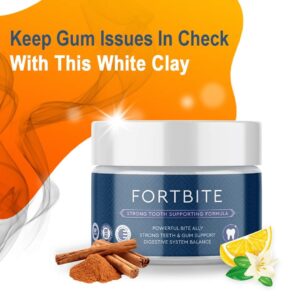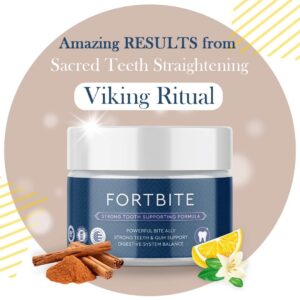When can I start brushing my baby?
You can start cleaning your baby’s gums even before their first tooth emerges. Here’s a timeline to guide you:
Before Teeth Emerge (Newborn to 6 Months)
- Gum Cleaning: After feedings, gently wipe your baby’s gums with a clean, damp cloth or gauze pad. This helps remove bacteria and keeps their gums clean and healthy.
- No Toothpaste: Avoid using toothpaste before the first tooth erupts, as babies tend to swallow toothpaste, and too much fluoride can cause fluorosis.
When the First Tooth Emerges (Around 6 Months)
- First Tooth, First Brushing: Once your baby’s first tooth appears, it’s time to start using a baby toothbrush. Use a soft-bristled toothbrush specifically designed for infants.
- Water Only: Initially, you can wet the toothbrush with water and gently brush your baby’s tooth and gums twice a day.
- Minimal Toothpaste: When your child is about 12 months old or as recommended by your dentist, you can start using a tiny smear of fluoride toothpaste (about the size of a grain of rice) on the toothbrush.
After Multiple Teeth Emerge (Around 18 Months)
- Increase Toothpaste Amount: Around 18 months to 2 years of age, you can increase the amount of toothpaste to a pea-sized amount.
- Supervision: Always supervise your child while they brush their teeth until they can effectively brush on their own, usually around age 6 or 7.
Tips for Brushing
- Gentle Technique: Use gentle, circular motions to brush your baby’s teeth and gums. Be careful not to press too hard, as their gums are still delicate.
- Make it Fun: Turn toothbrushing into a fun and positive experience by singing songs, making funny faces, or letting your child choose their toothbrush.
- Consistency: Establish a regular routine of brushing your baby’s teeth twice a day, preferably after breakfast and before bedtime.
Regular Dental Check-ups
- First Dental Visit: Schedule your child’s first dental visit around their first birthday or as recommended by your dentist. This allows the dentist to monitor their oral health and provide guidance on proper dental care.
Conclusion
Starting early with oral hygiene sets the foundation for a lifetime of good dental habits. By cleaning your baby’s gums and then brushing their teeth as soon as they emerge, you can help prevent tooth decay and promote a healthy smile. Be patient, consistent, and make toothbrushing a positive experience for your child.

When to start using toothpaste for a baby?
You can start using toothpaste for your baby once they have their first tooth, which usually erupts around six months of age. Here’s how to approach the introduction of toothpaste in your baby’s oral hygiene routine:
Choosing the Right Toothpaste
Fluoride-Free Toothpaste
- For Infants: Use fluoride-free toothpaste until your child is old enough to understand not to swallow the toothpaste, typically around age 2 or 3.
- Reason: Excessive fluoride ingestion in young children can lead to dental fluorosis, a condition that affects the appearance of teeth.
Size and Quantity
- Amount: Use only a tiny smear of toothpaste (about the size of a grain of rice) for infants.
- Reason: At this stage, your baby is likely to swallow most of the toothpaste, so it’s important to use a minimal amount.
Age-Appropriate Toothpaste
- Flavors and Ingredients: Choose a toothpaste designed specifically for babies or young children. These often have mild flavors and are formulated for their delicate teeth and gums.
When to Transition to Fluoridated Toothpaste
Age 2 or Older
- Fluoride Toothpaste: At around age 2, you can start using a fluoride toothpaste, but continue to use only a pea-sized amount.
- Reason: Fluoride helps strengthen tooth enamel and prevent cavities.
Supervision
- Brushing Technique: Supervise your child while brushing to ensure they use only a small amount of toothpaste and do not swallow it.
Brushing Tips for Babies
Start Early
- Gum Cleaning: Begin cleaning your baby’s gums with a soft, damp washcloth before teeth emerge to get them used to oral hygiene practices.
Introduce a Soft-Bristled Toothbrush
- First Toothbrush: Once the first tooth appears, switch to a soft-bristled baby toothbrush to clean their teeth and gums gently.
Regular Brushing
- Frequency: Brush your baby’s teeth twice a day—once in the morning and once before bed.
Dental Care Practices
Routine Check-Ups
- First Dental Visit: Schedule your baby’s first dental visit around their first birthday or when their first tooth erupts, whichever comes first.
Healthy Habits
- Avoid Sugary Foods: Limit sugary snacks and drinks to prevent cavities.
Conclusion
Start using toothpaste for your baby once their first tooth appears, using a fluoride-free toothpaste until they are old enough to understand not to swallow it. Introduce a soft-bristled toothbrush and establish a regular brushing routine to support your baby’s oral health. Transition to fluoride toothpaste around age 2, and ensure you supervise brushing to promote good dental habits.
At what age should a child start brushing their own teeth?
Children typically start brushing their own teeth with guidance and supervision around the age of 3 to 4 years old. Here’s a general guideline for when and how to encourage independent brushing:
Age Guidelines for Independent Brushing
Age 3 to 4 Years
- Start Encouraging: At this age, children can start brushing their own teeth with help. They can hold the toothbrush and practice brushing, but they still need assistance to ensure they are doing it effectively.
- Supervision: Continue supervising to ensure they brush properly and cover all areas of their teeth.
Age 5 to 6 Years
- Increased Independence: Children in this age group can usually brush their teeth more independently but still require supervision to make sure they are brushing correctly and for the full two minutes.
- Technique: Teach them to use the right amount of toothpaste (pea-sized amount) and to brush all surfaces of their teeth.
Age 7 to 8 Years
- More Independence: By this age, children are generally capable of brushing their teeth independently. They should be able to brush all surfaces of their teeth and use a fluoride toothpaste.
- Ongoing Supervision: Periodically check their brushing technique and make sure they are brushing for the full two minutes.
Age 9 and Older
- Self-Monitoring: Most children can manage their oral hygiene routine independently by this age. They should have developed good brushing habits and can handle flossing with minimal assistance.
- Regular Reminders: Continue to provide reminders and occasional checks to ensure proper brushing and flossing.
Tips for Encouraging Good Brushing Habits
Make Brushing Fun
- Incorporate Games: Use timers, songs, or apps to make brushing time enjoyable.
- Choose a Fun Toothbrush: Let your child pick out a toothbrush with their favorite colors or characters.
Model Good Habits
- Brush Together: Brush your teeth alongside your child to set an example and make it a family activity.
Positive Reinforcement
- Praise: Offer praise and encouragement when your child brushes their teeth correctly and consistently.
Teach Proper Technique
- Brush for Two Minutes: Ensure they understand the importance of brushing for at least two minutes.
- Use Proper Motion: Teach them to use gentle circular motions and to brush the front, back, and chewing surfaces of their teeth.
Regular Check-Ups
- Dental Visits: Schedule regular dental check-ups to monitor your child’s oral health and brushing habits.
Conclusion
Children can start brushing their own teeth with guidance around ages 3 to 4, and by ages 7 to 8, they should be brushing independently. Ongoing supervision and encouragement are important to ensure they maintain good brushing habits and effectively care for their teeth.

Should I brush my baby’s teeth before or after milk?
It’s generally recommended to brush your baby’s teeth after their last feeding of the day, including after milk. Here’s why:
Reasons to Brush After Milk
Remove Residual Sugars
- Milk Residue: Milk, whether formula or breast milk, contains sugars that can contribute to tooth decay if they remain on the teeth.
- Prevent Decay: Brushing after feeding helps remove these sugars and reduce the risk of cavities.
Establish a Routine
- Bedtime Routine: Brushing after the last feeding helps establish a consistent bedtime routine and reinforces the habit of brushing before sleep.
Oral Hygiene
- Effective Cleaning: Cleaning your baby’s teeth after milk ensures that any sugars or food particles are removed, maintaining better oral hygiene.
Brushing Tips for Babies
Timing
- Before Bed: Brush your baby’s teeth before putting them to bed for the night. This helps ensure that any food particles or sugars from the final feeding are cleaned off before they sleep.
Gentle Brushing
- Soft Brush: Use a soft-bristled baby toothbrush and a tiny smear of fluoride-free toothpaste (or fluoride toothpaste if the child is older) for effective and gentle cleaning.
Gum Cleaning
- Early Care: If your baby doesn’t have teeth yet, clean their gums with a soft, damp washcloth or a finger brush to remove bacteria and residue.
Supervision
- Monitoring: Continue to supervise brushing until your child can brush effectively on their own, usually around ages 5 to 7.
Additional Tips
- Avoid Bottles at Bedtime: If possible, avoid putting your baby to bed with a bottle of milk or juice, as this can increase the risk of tooth decay (sometimes called “bottle mouth” or “nursing bottle caries”).
- Regular Dental Visits: Schedule your baby’s first dental visit around their first birthday or when their first tooth erupts to ensure their oral health is on track.
Conclusion
Brush your baby’s teeth after their last milk feeding of the day to remove any residual sugars and maintain good oral hygiene. Establishing this habit early helps promote healthy teeth and gums and sets the stage for a lifelong commitment to dental care.
How to teach baby to brush teeth?
Teaching a baby to brush their teeth is an important step in establishing good oral hygiene habits. Here’s a guide to help you introduce and encourage brushing:
1. Start Early
- Gum Care: Even before your baby’s teeth come in, clean their gums with a soft, damp washcloth or a finger brush to get them used to the sensation of having their mouth cleaned.
2. Choose the Right Tools
- Baby Toothbrush: Use a soft-bristled toothbrush designed for infants. The brush should be small enough to fit comfortably in your baby’s mouth.
- Toothpaste: Use a fluoride-free toothpaste until your child is old enough to understand not to swallow it, usually around age 2. Once they understand, you can switch to a fluoride toothpaste.
3. Make Brushing Fun
- Incorporate Play: Use fun, age-appropriate toothbrushes featuring their favorite characters or colors.
- Sing Songs: Sing brushing songs or use a timer with a fun tune to make the process enjoyable.
4. Brush Together
- Modeling Behavior: Brush your teeth alongside your baby to show them how it’s done. This helps them understand the routine and makes it a shared activity.
- Interactive Brushing: Let your baby hold the toothbrush and practice brushing, even if it’s just for a short time.
5. Demonstrate Proper Technique
- Gentle Brushing: Show how to use gentle circular motions on all surfaces of their teeth.
- Short Sessions: Start with short brushing sessions (about 1-2 minutes) and gradually increase as they get more comfortable.
6. Make It a Routine
- Consistency: Brush your baby’s teeth twice a day—once in the morning and once before bed—to establish a consistent routine.
- Bedtime Routine: Integrate brushing into their bedtime routine to help reinforce the habit.
7. Offer Praise and Encouragement
- Positive Reinforcement: Praise your baby for brushing their teeth and provide encouragement. Positive reinforcement helps them associate brushing with a rewarding experience.
- Rewards: Consider small rewards, like a sticker, to motivate them to brush regularly.
8. Supervise and Assist
- Early Supervision: Continue to supervise brushing until your child can handle it effectively on their own, usually around ages 5 to 7.
- Assist with Difficult Areas: Help with brushing hard-to-reach areas and ensure they brush all surfaces of their teeth.
9. Regular Dental Check-Ups
- First Dental Visit: Schedule your baby’s first dental visit around their first birthday or when their first tooth erupts to ensure they are on track with their oral health.
10. Be Patient
- Gradual Learning: Understand that learning to brush takes time. Be patient and consistent, and make adjustments as needed to accommodate your child’s comfort and developmental stage.
Conclusion
Teaching your baby to brush their teeth involves starting early, making brushing fun, and establishing a consistent routine. Use the right tools, demonstrate proper technique, and offer positive reinforcement to help your child develop good oral hygiene habits. Regular dental check-ups and continued supervision will support their dental health as they grow.

How to clean baby teeth naturally?
Cleaning your baby’s teeth naturally involves using methods and products that are gentle and safe for their delicate mouths. Here are some natural approaches to maintain your baby’s oral hygiene:
1. Gum and Tooth Cleaning
- Soft Cloth or Gauze: Before teeth emerge, use a soft, damp washcloth or gauze to gently wipe your baby’s gums. This helps remove bacteria and food particles.
- Finger Brush: A finger brush with soft bristles can be used to gently clean the gums and emerging teeth.
2. Natural Toothbrushes
- Silicone Toothbrushes: Use a silicone toothbrush or gum massager designed for infants. These are soft and safe for baby’s sensitive gums and teeth.
- Small, Soft-Bristled Toothbrush: Once teeth emerge, choose a toothbrush with soft bristles specifically designed for babies.
3. Natural Toothpaste Alternatives
- Water: For infants, simply brushing with water can be effective in removing plaque and keeping teeth clean.
- Baking Soda: For older babies (around age 2 or older), a tiny amount of baking soda mixed with water can be used as a natural toothpaste. However, use it sparingly and consult your pediatric dentist before using it regularly.
4. Natural Rinsing
- Water Rinse: After feeding, especially if your baby consumes sugary liquids, you can gently rinse their mouth with a small amount of water to help remove residues.
5. Healthy Diet
- Fresh Fruits and Vegetables: Incorporate teeth-friendly foods into your baby’s diet, like crunchy vegetables and fruits (e.g., apples and carrots) that help naturally clean teeth and stimulate gums.
- Avoid Sugary Foods: Minimize sugary snacks and drinks that can contribute to tooth decay.
6. Homemade Solutions
- Herbal Teas: Some parents use cooled, unsweetened herbal teas, like chamomile, to help clean their baby’s mouth and soothe gums. Ensure any tea used is safe for babies and consult with your pediatrician first.
7. Regular Dental Visits
- First Dental Check-Up: Schedule your baby’s first dental visit around their first birthday or when their first tooth erupts to ensure their oral health is monitored.
8. Gentle Massages
- Gum Massage: If your baby is teething, gently massaging their gums with a clean finger can help soothe discomfort and promote oral health.
Additional Tips
- Avoid Harmful Substances: Steer clear of using products with artificial sweeteners or harsh chemicals.
- Consistency: Establish a regular oral hygiene routine to get your baby used to the process of cleaning their teeth.
Conclusion
Cleaning your baby’s teeth naturally involves using soft, safe tools and methods that are gentle on their developing teeth and gums. By incorporating natural cleaning practices, maintaining a healthy diet, and scheduling regular dental check-ups, you can promote good oral hygiene and support your baby’s dental health.